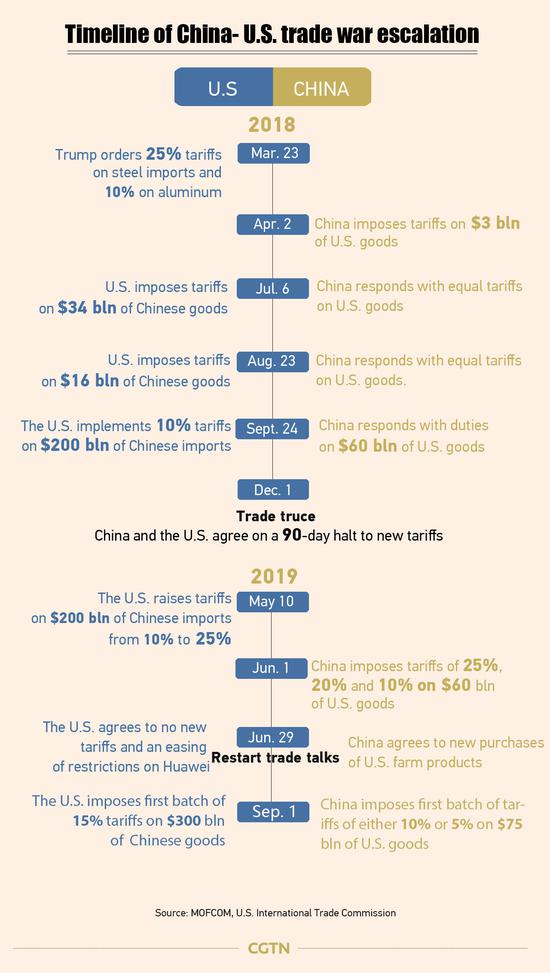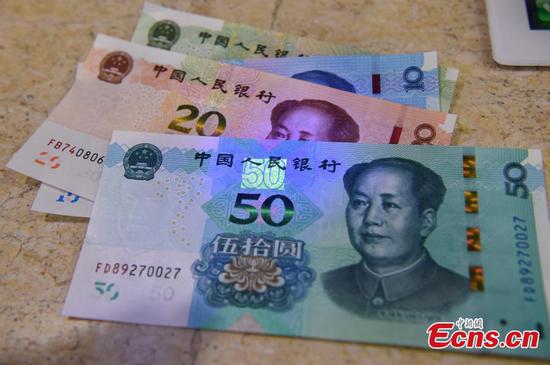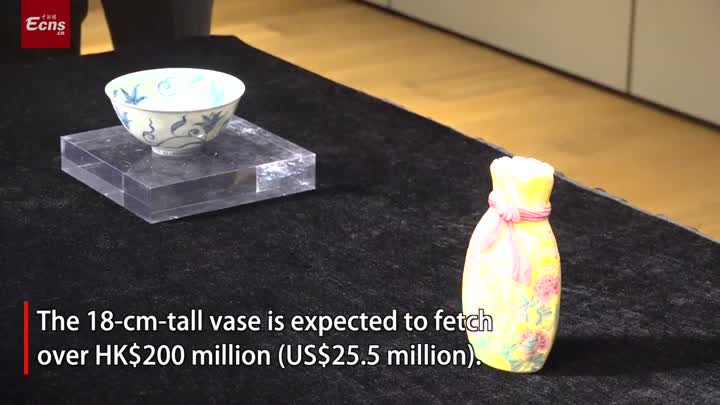
A fresh wave of tariffs has been imposed on a portion of 300 billion U.S. dollars' worth of Chinese goods on Sunday. Meanwhile, China's first batch of retaliatory tariffs of either 10 or 5 percent on 75 billion U.S. dollars of U.S. goods also went into effect.
At noon, the U.S.' additional tariffs of 15 percent on a portion of 300 billion U.S. dollars of Chinese imports enter into force. The 15 percent tariffs – which is in addition to the 25 percent tariffs already in effect – essentially covers all of China's exports to the United States.
Negotiators from both countries plan to meet again early this month in the U.S. China's Ministry of Commerce said that the new round of U.S. tariffs will not lead to good conditions for trade talks. It expressed hopes the U.S. can return to normal bilateral trade, on the basis of fairness and mutual respect, rather than continuing conflict.
Trump's new tariffs hurt U.S. consumers
Trump's tariff strategies have hurt the confidence of U.S. consumers. A recent survey conducted by the University of Michigan shows the U.S. consumer confidence index had its biggest monthly decline since December 2012.
The index fell 8.6 to 89.8. Analysts say tariffs are the main reason as they have led to rising uncertainties and reduced expenditures.
Personal consumption expenditure accounts for about 70 percent of the U.S. economy. It is the main engine of U.S. economic growth and a key pillar of U.S. market confidence.
Signs of slowing on incomes and savings
In addition to tariffs, personal income growth in U.S. is also showing signs of slowing. Data from the U.S. Department of Commerce shows that personal income rose by 0.1 percent annually in July, which is the smallest increase since September last year and also a significant drop compared to 0.5 percent in June.
Personal savings fell from 1.32 trillion U.S. dollars in June to 1.27 trillion U.S. dollars, hitting the lowest level since November 2018.


















































